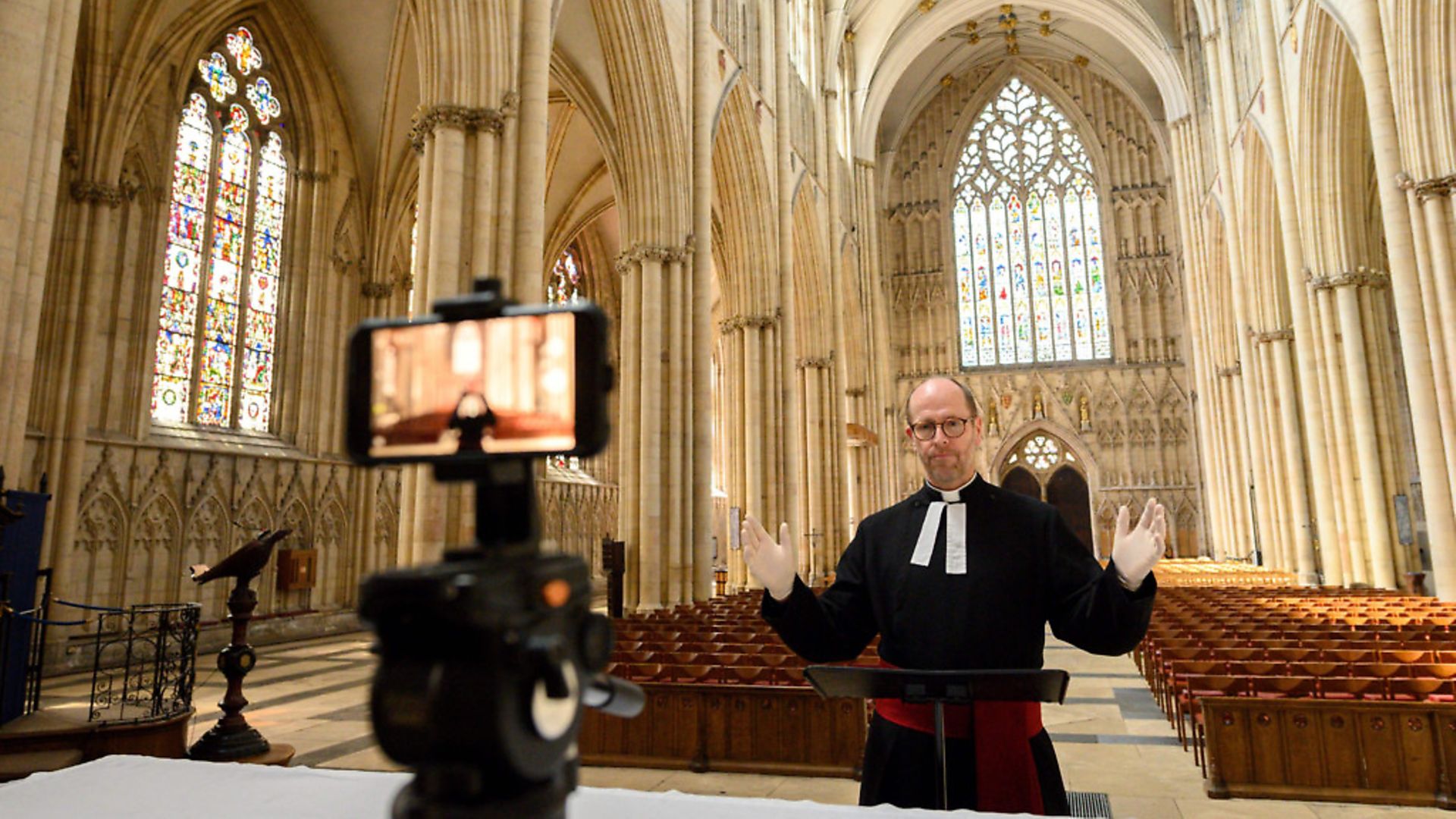
Former communicant WILL SELF wonders where the Church has been through this pandemic, and ponders if we brought it on ourselves through worshiping mammon
I come from a long line of Anglican priests on my father’s side – my grandfather was himself a lay preacher, and at one time president of the Modern Churchmen’s Union. When we were children, Dad would take us to services at All Saints in Hove. What I remember most is not the liturgy or the relationship of the architecture to the sacerdotal (this, despite the fact I myself had been christened in its chilly-looking font), but my father’s jolly – if sotto – insistence that we all bet on the length of the sermon. (All bets were off when it came to content and delivery – both of which were lavishly dull.) There is much to be said about Anglicanism as a doctrinal spread-bet on mild religious faith and middle class complacency, but the fact remains that we have an established church in this country, one whose remit is to minister to the spiritual requirements of every single citizen, regardless of their beliefs or lack of them.
Which makes the absence of Church of England from the response to the current pandemic seem surpassing wondrous to those of us who’ve had our eyes on the clock, quite as much those who’re fixated on the life eternal. Where has the Archbishop of Canterbury been these past few months? He gave us a little online service at Easter, intoning into cyberspace from behind his stripped pine kitchen table in Lambeth Palace. Sporting appropriate vestments, and attended by a Welsh dresser that looked to be full of regulation willow-pattern china, he told us there was no going back, and that the new normal – when it arrived – needed to be accompanied by ‘a resurrection of our communal life’. Hallelujah! Oh, and there was also a little carefully piddled-out news about him going to nearby St Thomas’ Hospital to minister in person to the sick and dying – because why should the virtuous be disallowed a little… virtue signalling.
But you don’t need to be a former communicant to point out the continuing cultural significance of the Church of England – just walk the streets of any English town or city. Coming over Vauxhall Bridge last Sunday, past the thousands of Black Lives Matter demonstrators marching from the US embassy to Whitehall, I was struck by the sight of the spire of St John the Divine in Kennington. In a city increasingly cluttered up by glassy contemporary skyscrapers, it’s curious to note quite how salient churches remain. On my nightly promenades I find myself quite unconsciously aiming for these landmarks – not just the redbrick bulk of St John’s (by A.E. Street, no less), but among others the weird Modernist church, St Paul, which forms one of the focal points of the old London County Council’s ambitious Brandon Estate, built in the early 1950s.
Pevsner writes of St Paul’s ‘restless, somewhat self-consciously modern exterior, with spiky gables and dormers in a copper roof’; nevertheless, he avers the interior of this striking edifice to be ‘pleasantly calm, with subdued lighting and a boarded ceiling of interesting shape’. Not that I’ve been able to see the interior these past three months – because St Paul, like all the other C of E churches has been securely locked and bolted. In truth, big city churches have been under lock and key for decades now – ever since unbelief in anything much but scrap metal prices gripped the laity. Voices are now being raised among the clergy to the effect that the archbishop, in cravenly following the government’s directive to close all places of worship, was acting more like a health and safety officer than a divinely ordained intercessor. But let’s face it: if their premises were only open for services before – why would the Church of England open them for private prayer during a pandemic? I’m not saying the church leaders are hypocrites just that the City of God also seems to have a rentier class.
And now, following the murder of George Floyd in Minneapolis, and the upsurge of anger from England’s black community (who are a significant proportion of the Church’s laity – but correspondingly underrepresented in its episcopal offices), more voices are to be heard raised not in prayer, or lamentation – but righteous anger. The head of the Catholic Church in England, Cardinal Vincent Nichols, has taken a rather more robust line than mimsy Welby; pointing out that places of worship are being grouped with the hospitality industry – so not eligible for reopening until well into July. However, while wishing prayer to be treated as a form of retail rather than repentance, neither of these mitre men is prepared to quote scripture in support of their faith.
Unsurprisingly, given the King James Version of the Bible depicts God visiting no fewer than 120 plagues on humanity. Neither archbishop nor cardinal will risk floating the idea – at once orthodox and heretical – that we brought the pandemic on ourselves by cause of our worship of mammon. No, that’s left to me, a humble agnostic, although I wouldn’t bet on it.










